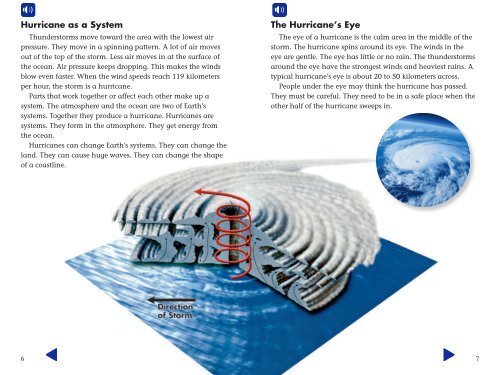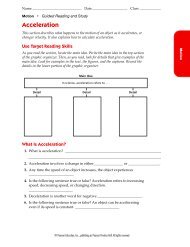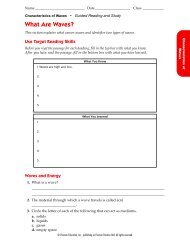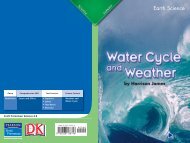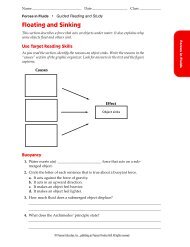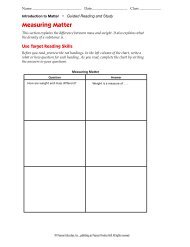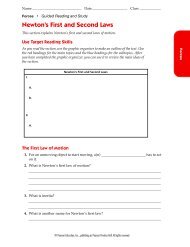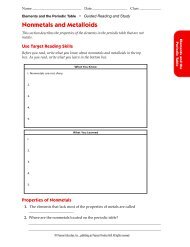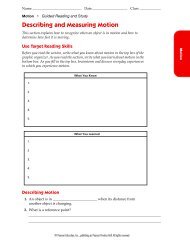Hurricanes and Tornadoes - district87.org
Hurricanes and Tornadoes - district87.org
Hurricanes and Tornadoes - district87.org
Create successful ePaper yourself
Turn your PDF publications into a flip-book with our unique Google optimized e-Paper software.
Hurricane as a System<br />
Thunderstorms move toward the area with the lowest air<br />
pressure. They move in a spinning pattern. A lot of air moves<br />
out of the top of the storm. Less air moves in at the surface of<br />
the ocean. Air pressure keeps dropping. This makes the winds<br />
blow even faster. When the wind speeds reach 119 kilometers<br />
per hour, the storm is a hurricane.<br />
Parts that work together or affect each other make up a<br />
system. The atmosphere <strong>and</strong> the ocean are two of Earth’s<br />
systems. Together they produce a hurricane. <strong>Hurricanes</strong> are<br />
systems. They form in the atmosphere. They get energy from<br />
the ocean.<br />
<strong>Hurricanes</strong> can change Earth’s systems. They can change the<br />
l<strong>and</strong>. They can cause huge waves. They can change the shape<br />
of a coastline.<br />
The Hurricane’s Eye<br />
The eye of a hurricane is the calm area in the middle of the<br />
storm. The hurricane spins around its eye. The winds in the<br />
eye are gentle. The eye has little or no rain. The thunderstorms<br />
around the eye have the strongest winds <strong>and</strong> heaviest rains. A<br />
typical hurricane’s eye is about 20 to 50 kilometers across.<br />
People under the eye may think the hurricane has passed.<br />
They must be careful. They need to be in a safe place when the<br />
other half of the hurricane sweeps in.<br />
6<br />
7


